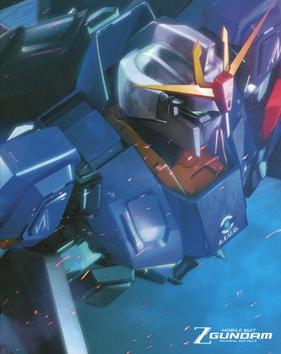
Mobile Suit Zeta Gundam is a 1985 Japanese television anime series, the second installment in the Gundam franchise, and a sequel to the original Mobile Suit Gundam. The show was created and directed by Yoshiyuki Tomino, with character designs by Yoshikazu Yasuhiko, while the series' mechanical designs are split among Kunio Okawara, Mamoru Nagano, and Kazumi Fujita. The series was originally aired on Nagoya Broadcasting Network and its sister ANN stations between 1985 and 1986.

Koji Kondo is a Japanese music composer, pianist, and sound director for the video game company Nintendo. He is best known for his many contributions to the Super Mario and The Legend of Zelda series of video games, among others produced by the company. Kondo was hired by Nintendo in 1984, becoming the first person hired by them to specialize in video game music. His work in the Mario and Zelda series have been cited as the most memorable in video games, such as the Super Mario Bros. overworld theme.

"Ue o Muite Arukō", alternatively titled "Sukiyaki", is a song by Japanese crooner Kyu Sakamoto, first released in Japan in 1961. The song topped the charts in a number of countries, including the U.S. Billboard Hot 100 in 1963. The song grew to become one of the world's best-selling singles of all time, selling over 13 million copies worldwide.

Rush'n Attack, also known as Green Beret in Japan and Europe, is a run-and-gun and hack-and-slash video game developed and released by Konami for arcades in 1985, and later converted to the Nintendo Entertainment System and home computers. Its North American title is a play on the phrase "Russian attack" due to its Cold War setting. It was ported to home systems and became a critical and commercial success for arcades and home computers.
The Brilliant Green is a Japanese rock band from Kyoto formed in 1995. They were signed to Sony Music Records. Their major debut single under Sony, "Bye Bye Mr. Mug", was released in 1997. Their contract with Sony ended in 2008, and on December 1, 2009, the band announced that it had signed with Warner Music Japan.

The New Christy Minstrels are an American large-ensemble folk music group founded by Randy Sparks in 1961. The group has recorded more than 20 albums and scored several hits, including "Green, Green", "Saturday Night", "Today", "Denver" and "This Land Is Your Land". The group's 1962 debut album, Presenting the New Christy Minstrels, won a Grammy Award and remained on the Billboard 200 albums chart for two years.

"The Yellow Rose of Texas" is a traditional American song dating back to at least the 1850s. Members of the Western Writers of America chose it as one of the Top 100 Western songs of all time. Many versions of the song have been recorded, the most popular of which was by Mitch Miller, whose version reached No. 1 in the United States in 1955. Its popularity made it an unofficial state song of Texas.

"Sakura Sakura", also known as "Sakura", is a traditional Japanese folk song depicting spring, the season of cherry blossoms. It is often sung in international settings as a song representative of Japan.
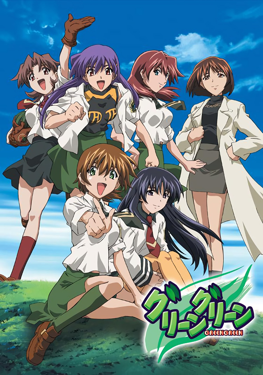
Green Green is a Japanese, 12-episode anime adaptation of the H-game of the same name. A non-canon sequel exists to the story as a thirteenth episode, which was released at a later date. This 'Episode 13' is unlicensed and not included in the US release.
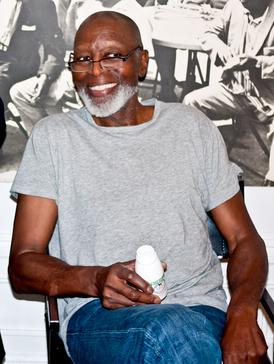
Eugene Booker McDaniels was an American singer, producer and songwriter. He had his greatest recording success in the early 1960s, reaching number three on the U.S. Billboard Hot 100 singles chart with "A Hundred Pounds of Clay" and number five with "Tower Of Strength," both hits in 1961. He had continued success as a songwriter with titles including "Compared to What" and Roberta Flack's "Feel Like Makin' Love".

"Namae no Nai Sora o Miagete" is the fourteenth single by Japanese recording artist Misia. It was released on July 7, 2004 as the first and sole single from Misia's sixth studio album Singer for Singer.

Masahiko Kondō, or Matchy, is a Japanese singer, lyricist, actor, racing car manager and former semi-professional racing driver. He was a member of the Tanokin Trio.

Greeeen or GRe4N BOYZ is a Japanese vocal group from Kōriyama in Fukushima Prefecture, comprising the all-male four members: HIDE, navi, 92, and SOH. On March 19, 2024, the group announced a significant change by altering their name to GRe4N BOYZ upon leaving their previous agency, High Speed Boy.
The Super Mario Bros. theme, officially known as the "Ground Theme" is a musical theme originally heard in the first stage of the 1985 Nintendo Entertainment System video game Super Mario Bros. It was one of six themes composed for the game by Nintendo sound designer Koji Kondo, who found it to be the most difficult track to compose for it. The theme is set in the key of C major and features a swing rhythm with prominent use of syncopation. While the original theme is composed within the sound limitations of the NES's 8-bit hardware, in later installments with more powerful sound hardware, it is often scored as a calypso song led by steel drums.
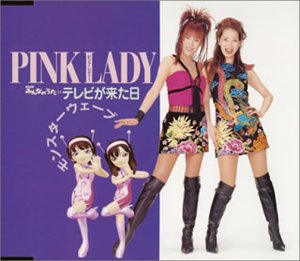
"Terebi ga Kita Hi" is the 25th single by Japanese duo Pink Lady, released on May 5, 2003. Written by longtime Pink Lady songwriters Shunichi Tokura and Yū Aku, the song was recorded for NHK's Minna no Uta as part of the network's 50th anniversary celebration. The music video for the song features CGI animated versions of the duo.
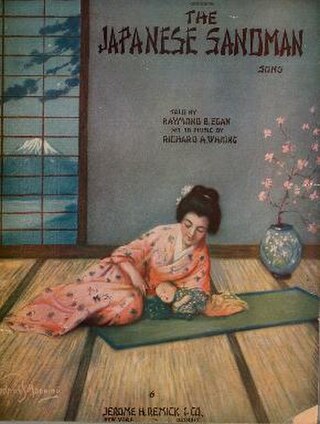
"The Japanese Sandman" is a song from 1920, composed by Richard A. Whiting and with lyrics by Raymond B. Egan. The song was first popularized in vaudeville by Nora Bayes, and then sold millions of copies as the B-side for Paul Whiteman's song "Whispering".
The Back Porch Majority was an American folk music group founded by Randy Sparks in 1963. It was intended to be a rehearsal space for The New Christy Minstrels, another group Sparks had established in 1961, but it ended up becoming successful on its own. The group released six albums, appeared on several TV shows and was chosen to provide entertainment at the White House in 1965.

Akihisa Shiono is a Japanese actor. He played the role of Souji Rippukan/Kyoryu Green in the 2013 Super Sentai TV series Zyuden Sentai Kyoryuger.
"Kondo Watashi Doko ka Tsurete itte Kudasai yo" is a song by Japanese singer/songwriter Chisato Moritaka, from her 1989 studio album Hijitsuryokuha Sengen. The lyrics were written by Moritaka and the music was composed by Hideo Saitō.

Come Come Everybody is a Japanese television drama series and the 105th NHK Asadora series, following Okaeri Mone. It premiered on November 1, 2021, and concluded on April 8, 2022. The story is about 100 years-old family, three generations, Yasuko (grandmother), Rui (mother), and Hinata (daughter) who worked with a radio English course during the Shōwa, Heisei, and Reiwa eras. The drama is set in Okayama, Osaka and Kyoto.















